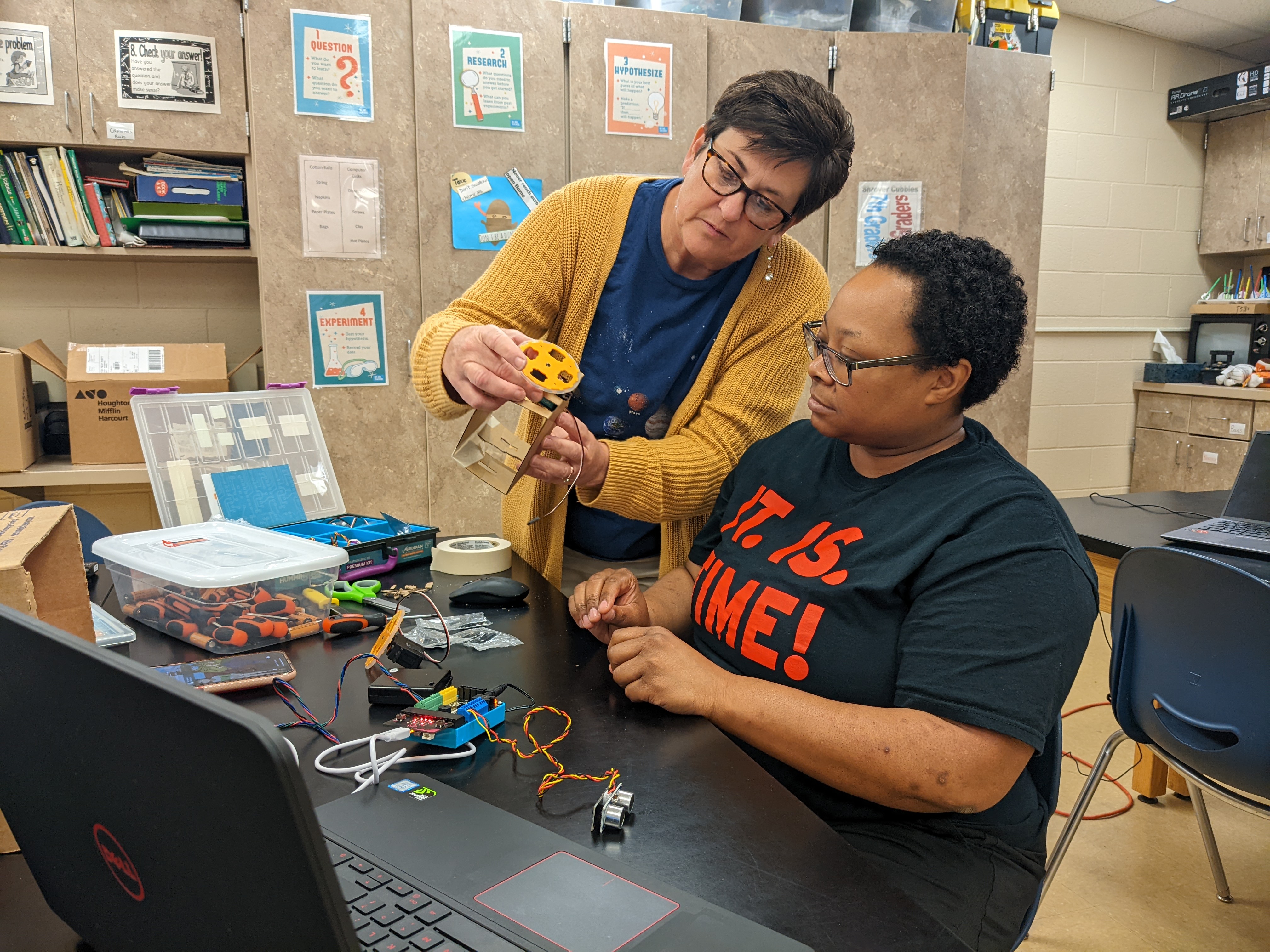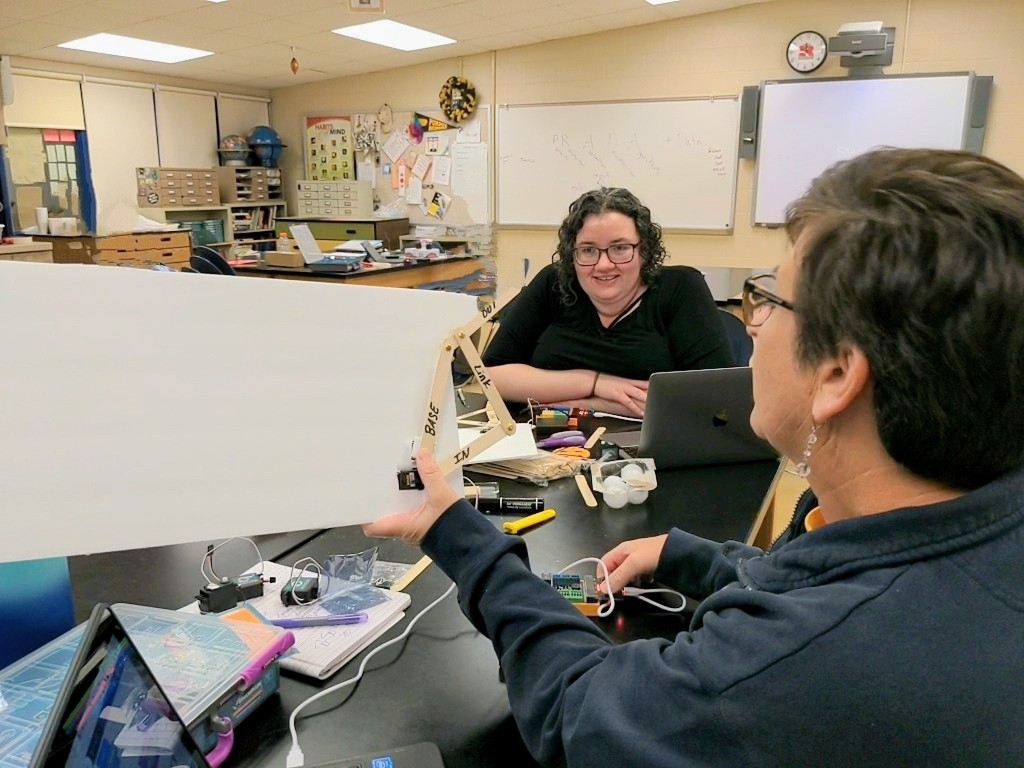

Project Overview
The Robots in Science project (NSF #1932854) investigated the integration of robotics and computational thinking into middle school physical science instruction. Working with 13 science teachers and over 370 students across rural, suburban, and urban schools, we examined how technology integration can enhance science learning while developing computational thinking skills.
Research Questions
- How can a professional development intervention support middle school science teachers in designing instructional units that incorporate robotics to enhance student CT practices and support disciplinary learning objectives?
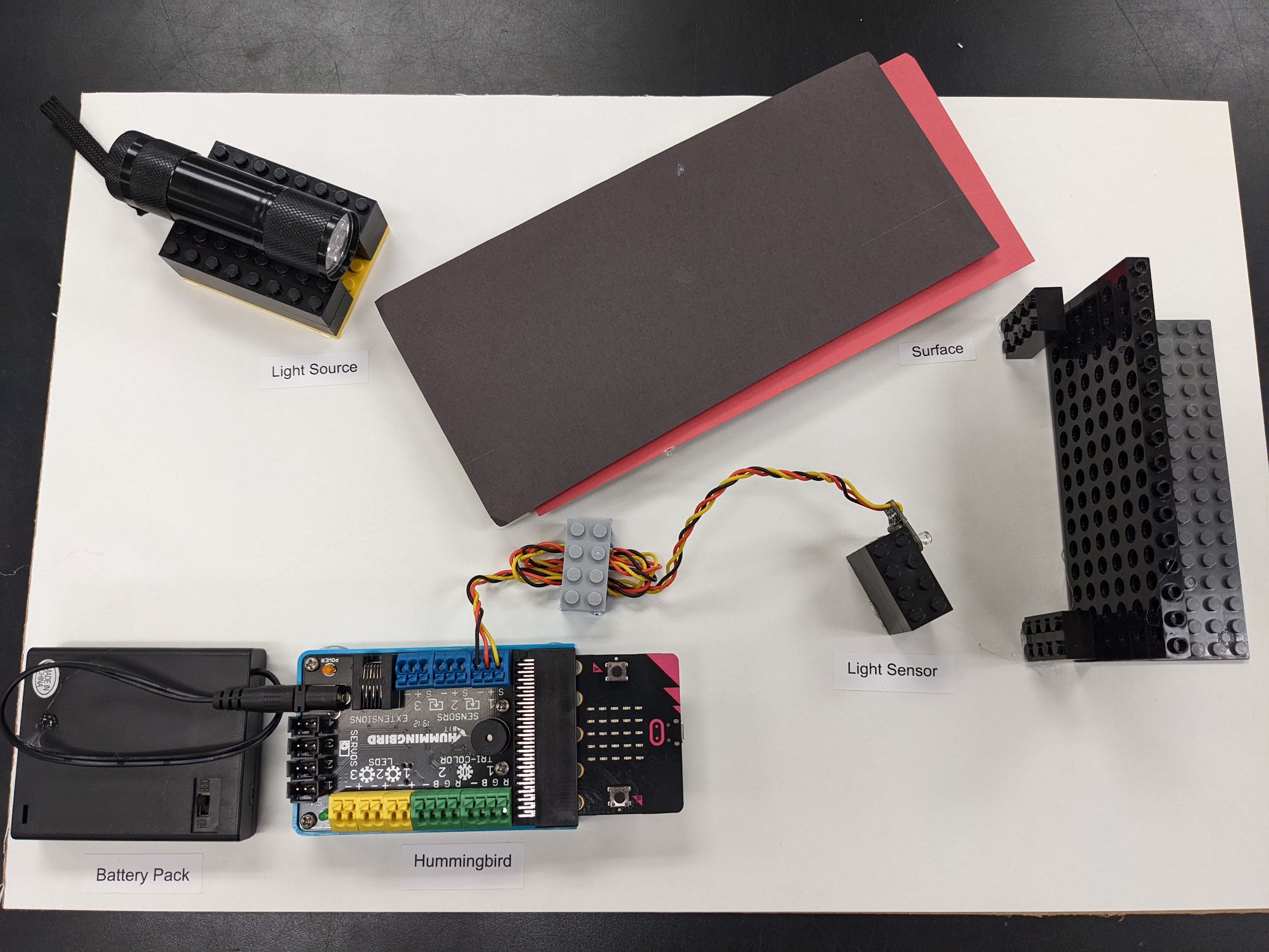
- What extent does teacher enactment reflect the goals and principles of the approach to integration, and what challenges do teachers face during implementation?
- How does participation in integrated robotics lessons support student learning in the discipline?
- What opportunities does participation in integrated robotics lessons provide for students to engage in computational thinking practices?
Key Outcomes & Impact
The project demonstrated several important findings:
Teacher Development
The experiences of participating teachers underscored the importance of finding appropriate models to support student science learning. Through the professional development program, teachers:
- developed skills and confidence to create integrated activities for their students,
- reported that designing new units was challenging but rewarding,
- felt supported in their learning about robotics, and
- demonstrated changes in knowledge about technology and instructional design
Student Learning
Robot-enhanced lessons effectively engaged students in explorations of science concepts. Units covered a range of topics such as energy transfer, Newton’s Laws of Motion and properties of light and sound
- Students showed increased interest and engagement when robotics was integrated into science lessons
- Robotics-enhanced science units supported students’ development of computational thinking practices, namely pattern recognition, algorithm design, decomposition, abstraction, and data practices
- Students (N=186) demonstrated growth in CT skills within science contexts
The research contributed valuable insights into effective models for technology integration in science education and identified resources that can support teachers in this work.
My Contribution
As the robotics and technology expert on this project, I led several critical components:

Technical Design & Implementation: I selected project technology platforms (Hummingbird robotics kit, Microbits, MakeCode) and designed instructional materials for their use. These choices enabled teachers and students to create expressive models representing science concepts, expanding beyond typical experiment-focused applications.
Professional Development: I designed and facilitated all robotics and technology workshop activities and co-created the computational thinking lessons for teachers. When COVID hit in 2020, I led the rapid transformation of our hands-on robotics program to fully online formats, selecting digital collaboration tools and redesigning activities for virtual delivery.
Teacher Support: I provided ongoing mentoring to all participating teachers throughout implementation, serving as their primary resource for technology questions and classroom integration challenges. I also developed exemplar integrated robotics lessons now available on the project website.
Transferable Skills & Reflection
This project highlights several of my core professional strengths applicable to both academic and industry settings:
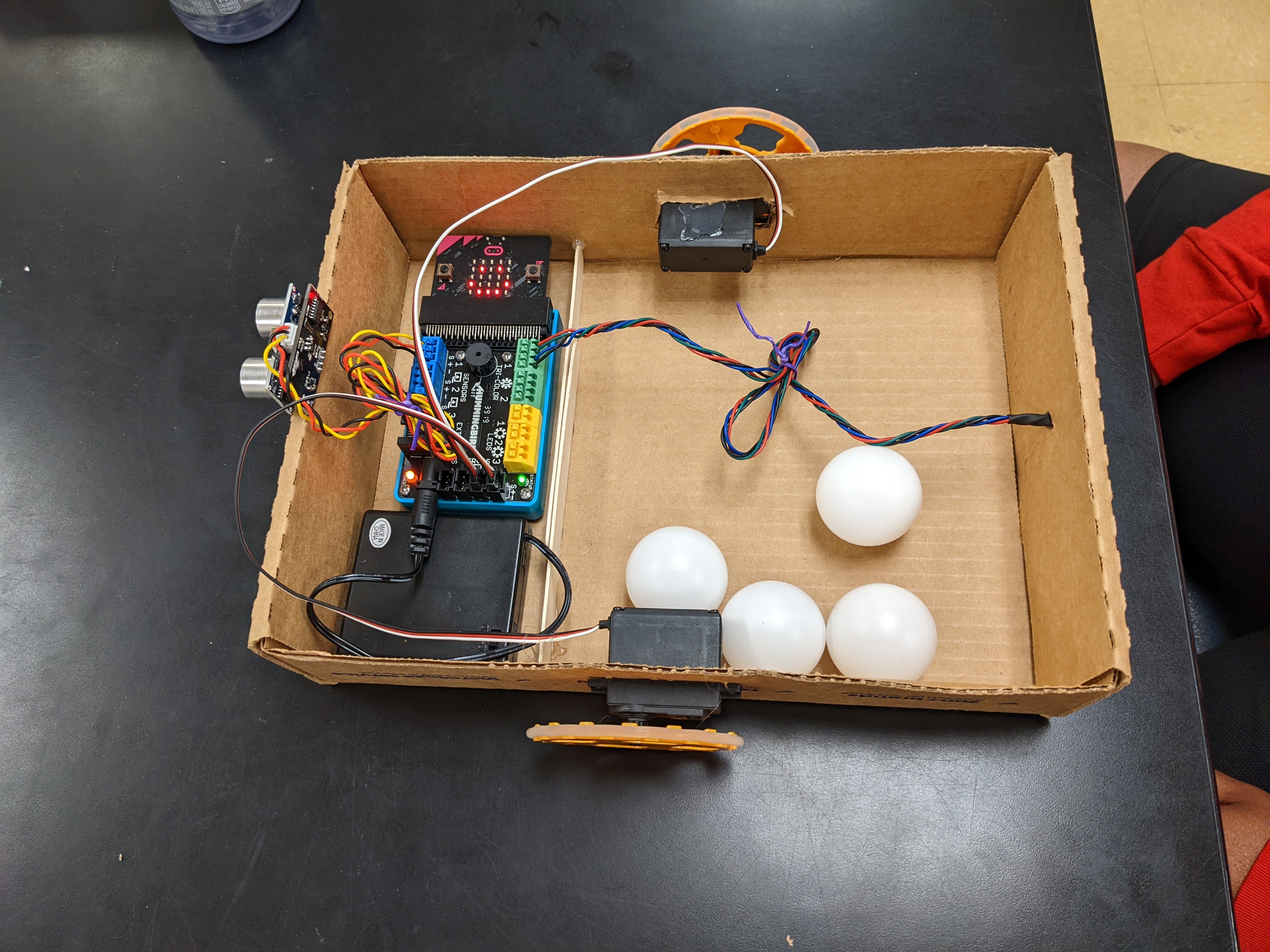
Design Thinking: I incorporated design thinking methodologies in the professional development and curriculum materials to support teachers’ development of design skills. At the same time, I applied user-centered approaches to tailor the PD to teachers’ needs, continuously refining based on feedback and implementation experiences.
Technical Translation: I bridged technical robotics concepts with pedagogical approaches, making complex technology accessible to educators with varying technical backgrounds.
Adaptive Problem-Solving: When faced with the challenge of COVID restrictions, I rapidly reconfigured hands-on experiences for digital environments, demonstrating flexibility and creative solution development.
Cross-Disciplinary Collaboration: I worked effectively with education researchers, curriculum specialists, and classroom teachers, facilitating communication across disciplines to achieve project goals.
This work demonstrates my commitment to thoughtful technology integration that serves authentic user and learner needs – an approach that informs all my work.
Related Publications
Debra Bernstein, Michael Cassidy, Karen Mutch-Jones and Jennifer L. Cross. 2022. Robots in Science: How Middle School Science Teachers Design Integrated Robotics Units For Their Science Classes. 2022 International Conference of the Learning Sciences (ICLS), 1968-1969. International Society of the Learning Sciences.
Debra Bernstein, Michael Cassidy, Karen Mutch-Jones and Jennifer L. Cross. 2023. Using robotics to enhance middle school science learning: Examining teachers' design goals for integrated lessons. 2023 American Education Research Association (AERA) Annual Meeting. AERA.
Project Gallery
More Projects
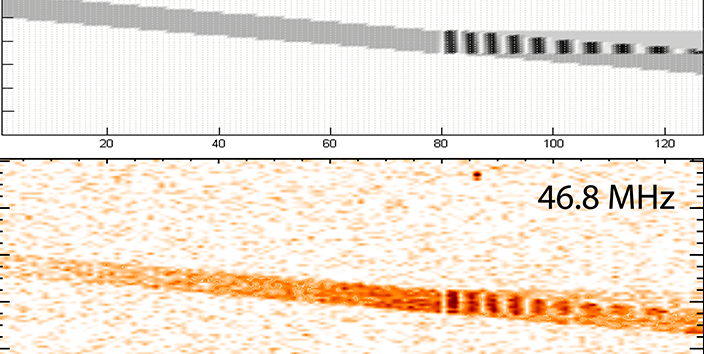
Micrometeor Radio Classification & Radar Simulation
Developed data analysis techniques for identifying micrometeors using radar telescopes, supporting controversial fragmentation phenomena through MATLAB simulations.
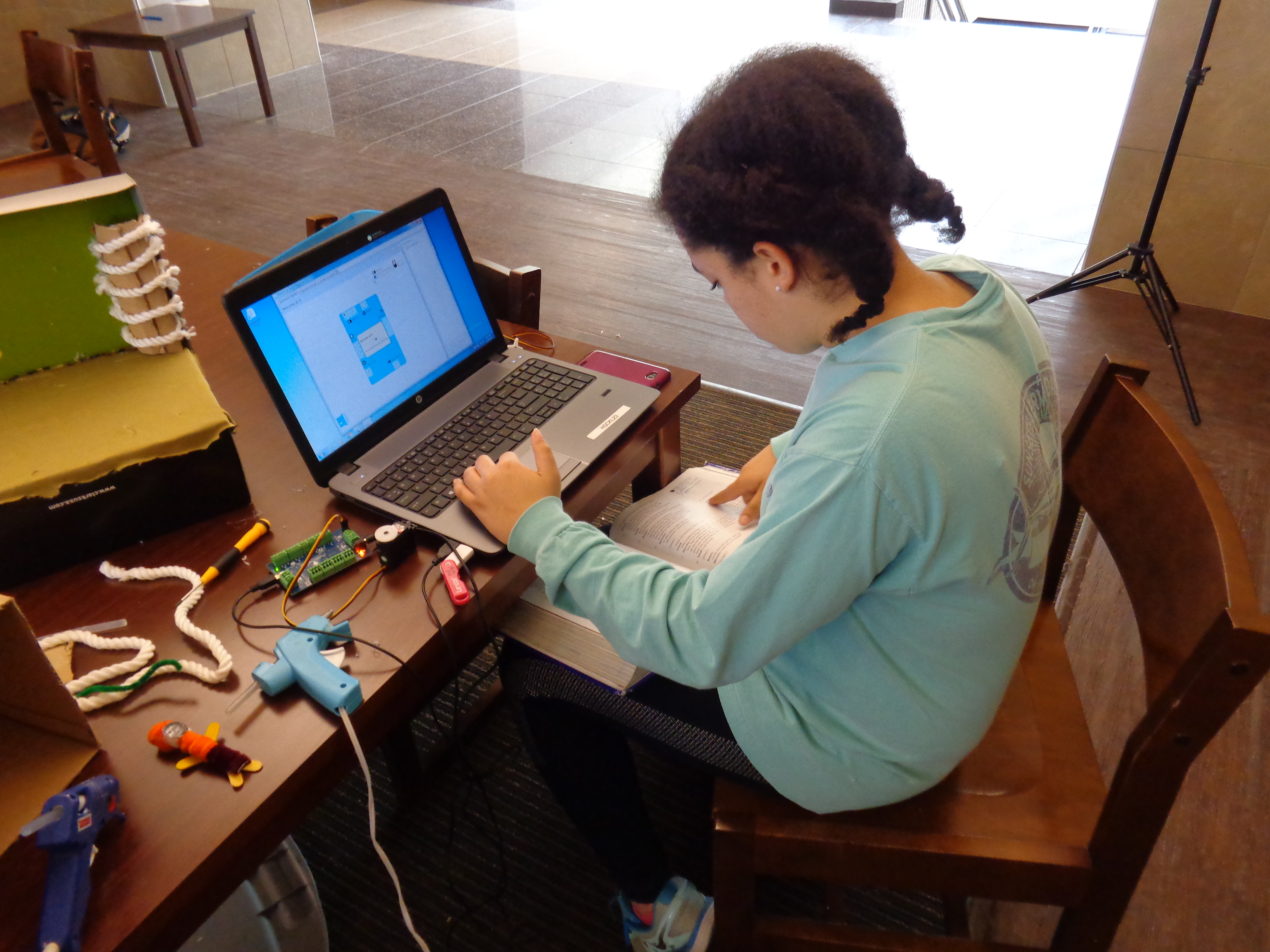
Arts & Bots
An inclusive educational robotics program that integrates creative technology into non-technical middle school classes to identify and cultivate diverse STEM talent.
